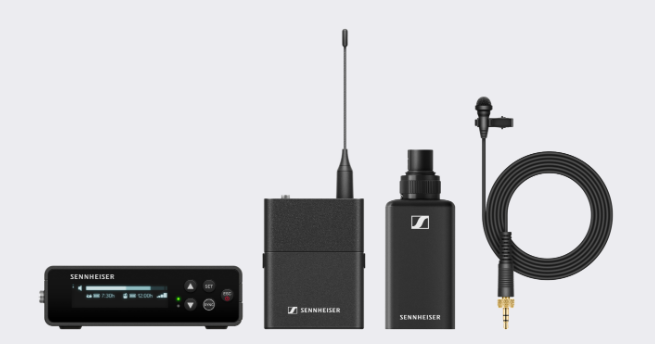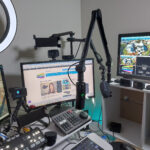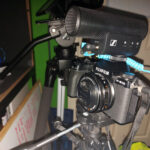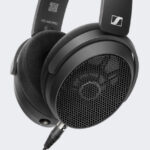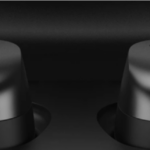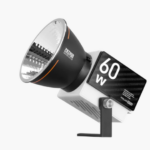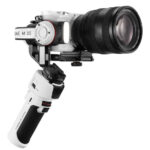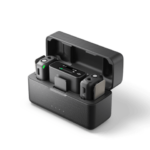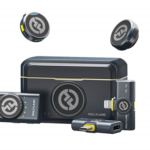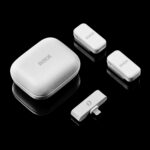Since the advent of digital, audio has come a long, long way. I well remember the day my original Azden radio mics had to be pensioned off as they were now deemed “illegal”. As I recall, the frequency they used was reallocated to a taxi company or something.
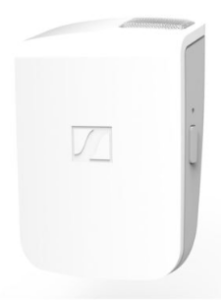
It was at this time I first looked at Sennheiser for my then modest mic needs, and the first unit I got – and still have – was the Memory Mic, a nifty little device that worked in conjunction with a smartphone app.
You simply downloaded the audio file from the smartphone and synced it up with the Sony Vegas NLE I was using at time. (Of course Sony is long gone from that program, and it is now owned by German company MAGIX, but that is a whole other story itself).
When my audio requirements became a little more complex I moved on to the Sennheiser XSW-D digital wireless system which consists of a pair of paired capsules – one being the transmitter with a lavaliere lapel mic and the other being the receiver with a 3.5mm output to whatever you want to store via such as a camera or mixer with SD card / SSD storage.
This system has a line-of-sight range of around 70 metres and a battery life of 5 hours.
The other week I received a new digital system called the Evolution Wireless Digital Portable ENG Set which is a bit of a mouthful, and this takes my audio recording to a completely different level indeed.
On the microphone side, you get a lavaliere mic, but instead of the capsule of the XS_D system, you have a dull on belt pack with an antenna, and powered by a couple of AA batteries. On the top is a Sync button and a Mute switch, and the range is good for 100 metres line of sight.
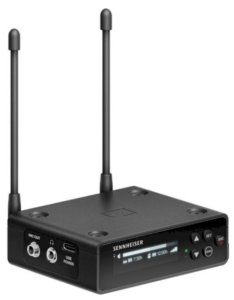 The base station is powered by a lithium battery charged via USB-C. On the front is a small LCVD panel showing your levels, battery life left in both the base and transmitter, the frequency being used and the gain value at the time.
The base station is powered by a lithium battery charged via USB-C. On the front is a small LCVD panel showing your levels, battery life left in both the base and transmitter, the frequency being used and the gain value at the time.
There are also up and down buttons to change values, a Sync button, On / Off ESC button and Set button. On the side of the unit are ports for the audio out (to camera etc), headphones and the USB-C charging port.
Setup was a piece of cake as the units are already paired at the factory. All I needed to do was put batteries in the TX module, plug in the mic (which has a locking mechanism to stop it accidentally being pulled out), charge up the base unit and I was ready to go.
Rather than plugging into a camera, I had the base station connected to port 2 of the RØDECaster Duo I use which is in turn then connected to an Blackmagic Design ATEM Mini Pro with storage to a Samsung T5.
Connection was immediate, and I only needed to tweak the gain a bit to get rid of some speaker feedback and was then happily recording my next tutorial.
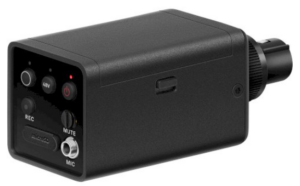 This Evolution comes with an additional party trick too. You also get a transmitter module letting you plug in an XLR based microphone and either transmit back to the base station and / or record to an SD card. I used a Sennheiser MKE600 and it worked perfectly, and this effectively gives you two mics in the system.
This Evolution comes with an additional party trick too. You also get a transmitter module letting you plug in an XLR based microphone and either transmit back to the base station and / or record to an SD card. I used a Sennheiser MKE600 and it worked perfectly, and this effectively gives you two mics in the system.
The transmitter is similarly powered by a couple of AA batteries, supports muting and 48v phantom power. If you don’t have an XLR based handheld mic and want to say, connect a 3.5mm shotgun on a camera, there is a port to support this too.
So, in summary, for your $1299 (shop that around is my suggestion), you get the lavaliere transmitter, the base station and a combination handheld XLR / 3.5mm mic transmitter that can also act as a portable recorder. The system comes with a 2 year warranty by the way.
I am tempted to switch to this permanently for creating my tutorials. The XSW-D system is easy to setup and compact, but has little control, instead relying in my case on the RØDECaster Duo to set gain values etc, whereas with the Evolution ENG, its all on the base receiver.
This will free up the XSW-D system for field use which makes far more sense.
You can get more information on the Sennheiser website.

